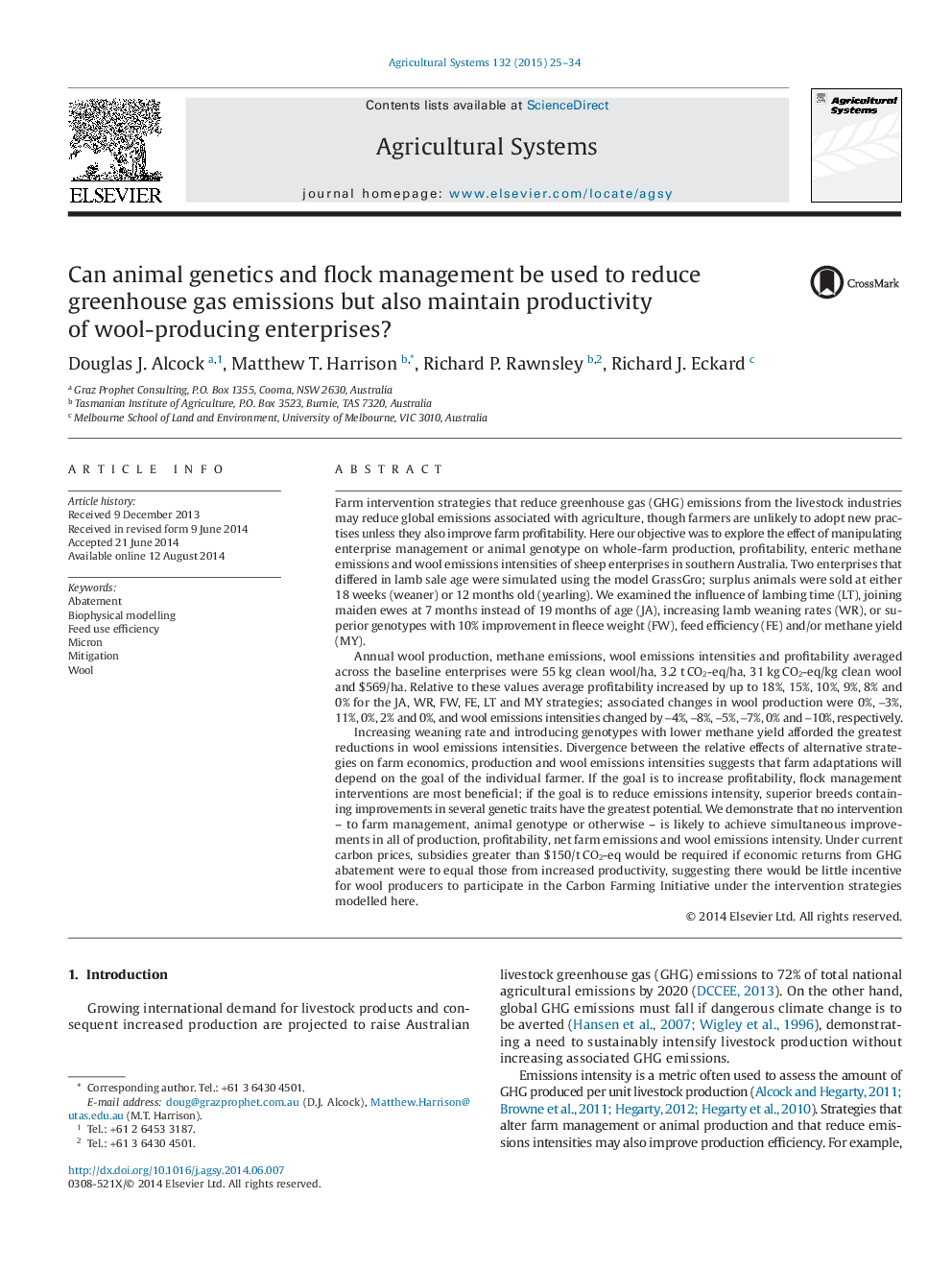| Article ID | Journal | Published Year | Pages | File Type |
|---|---|---|---|---|
| 6368583 | Agricultural Systems | 2015 | 10 Pages |
â¢We contrast interventions to pasture management and animal genotype of sheep farms.â¢We analyse profitability, production, greenhouse gas emissions and emissions intensities.â¢We showed that reducing maiden ewe joining age was most profitable.â¢Increasing ewe fecundity caused the greatest reductions in emissions intensities.â¢Increasing farm production was more profitable than abating emissions under the CFI.
Farm intervention strategies that reduce greenhouse gas (GHG) emissions from the livestock industries may reduce global emissions associated with agriculture, though farmers are unlikely to adopt new practises unless they also improve farm profitability. Here our objective was to explore the effect of manipulating enterprise management or animal genotype on whole-farm production, profitability, enteric methane emissions and wool emissions intensities of sheep enterprises in southern Australia. Two enterprises that differed in lamb sale age were simulated using the model GrassGro; surplus animals were sold at either 18âweeks (weaner) or 12âmonths old (yearling). We examined the influence of lambing time (LT), joining maiden ewes at 7âmonths instead of 19âmonths of age (JA), increasing lamb weaning rates (WR), or superior genotypes with 10% improvement in fleece weight (FW), feed efficiency (FE) and/or methane yield (MY).Annual wool production, methane emissions, wool emissions intensities and profitability averaged across the baseline enterprises were 55âkg clean wool/ha, 3.2âtâCO2-eq/ha, 31âkgâCO2-eq/kg clean wool and $569/ha. Relative to these values average profitability increased by up to 18%, 15%, 10%, 9%, 8% and 0% for the JA, WR, FW, FE, LT and MY strategies; associated changes in wool production were 0%, â3%, 11%, 0%, 2% and 0%, and wool emissions intensities changed by â4%, â8%, â5%, â7%, 0% and â10%, respectively.Increasing weaning rate and introducing genotypes with lower methane yield afforded the greatest reductions in wool emissions intensities. Divergence between the relative effects of alternative strategies on farm economics, production and wool emissions intensities suggests that farm adaptations will depend on the goal of the individual farmer. If the goal is to increase profitability, flock management interventions are most beneficial; if the goal is to reduce emissions intensity, superior breeds containing improvements in several genetic traits have the greatest potential. We demonstrate that no intervention - to farm management, animal genotype or otherwise - is likely to achieve simultaneous improvements in all of production, profitability, net farm emissions and wool emissions intensity. Under current carbon prices, subsidies greater than $150/tâCO2-eq would be required if economic returns from GHG abatement were to equal those from increased productivity, suggesting there would be little incentive for wool producers to participate in the Carbon Farming Initiative under the intervention strategies modelled here.
